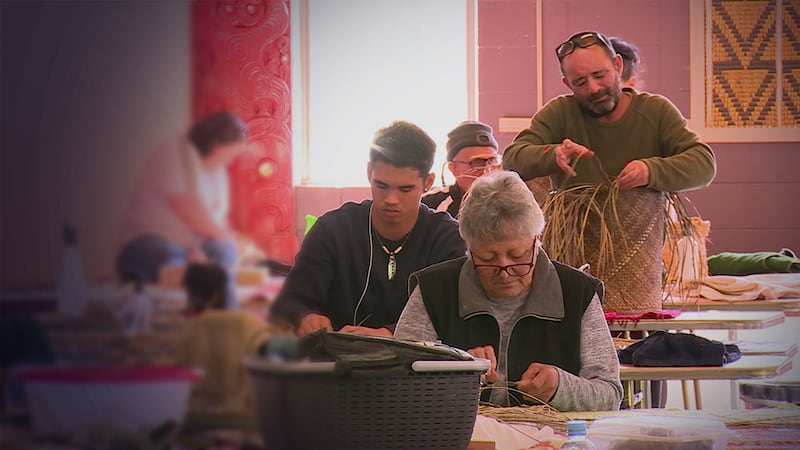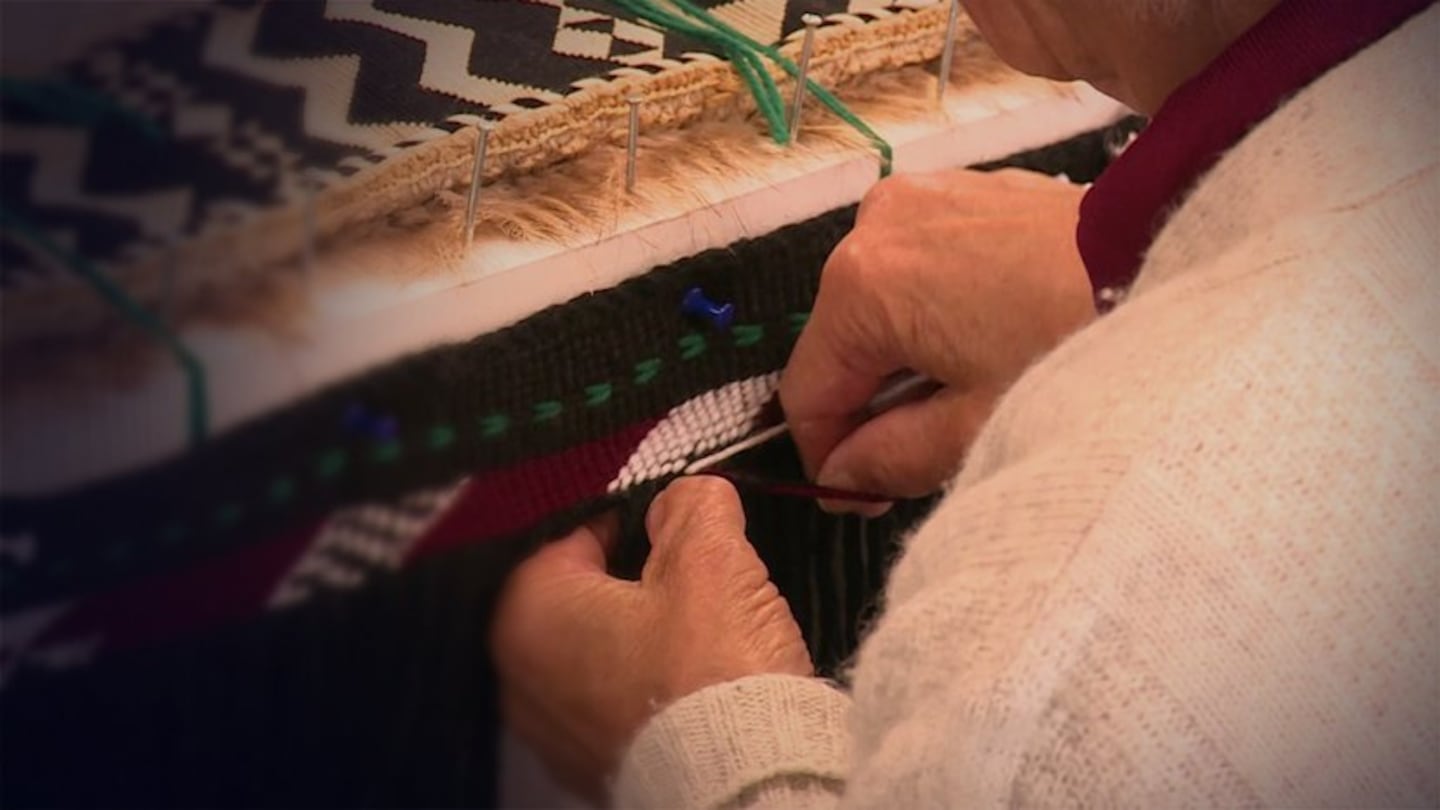Few people do traditional weaving these days and Te Arawa weaving expert Donna Waiariki is determined to teach aspects of traditional weaving and pass it on before it is lost.
Today on Waitetī Marae in Ngongotaha 20 beginners and advanced weavers from the hapu of Ngāti Ngāraranui came under Waiariki’s tutorage to help revive the art.
“We are going a lot into contemporary and a lot of the tradition is getting lost,” Waiariki (Ngāti Ngāraranui, Ngāti Rangiwewehi and Tūhourangi Ngāti Wāhiao) says.
Waiariki has been doing raranga for over 25 years and was taught by master weaver the late Emily Schuster from Te Arawa.
After seven years in Australia, Waiariki has returned home, hoping to revive traditional weaving among her family and friends.
The marae where she grew up, Waitetī, offered her a whare to teach and she has not looked back.
Google lessons
Waiariki puts a loss of traditional weaving to a loss of experienced teachers as a lot of people are depending on Google to learn.
“How many thousands of Māori people have we got living in Australia? They haven’t got contact with the materials that we have in New Zealand, so they are just replacing them,” Waiariki says.
Mata Daniels, who is also from the hapu Ngāti Ngāraranui, Ngāti Tarawhai and Ngāti Rangiwewehi, was excited to be among whānau weaving for the marae and whānau.
Daniels is working on a korowai for her whānau.
he has concerns about losing the precious art of traditional weaving also but is willing to do something about it.
“This art will not be lost. All of us will need to hold on to this art,” she says.
Her good friend and whānau member of Mata, Takotohiwi Thompson says, “The most important thing is these people here at this gathering.
“The participation of our youth in learning this art is also important.”
Great-great grandson learning
Seventeen-year-old Kingi Aupouri from Tūhourangi Ngāti Wāhiao is the great-great-grandson of master weaver Emily Schuster. He is now being taught by Waiariki who was his great-great grandmother’s student.
He is up to day five of weaving a bag. “It is special to me. I have enjoyed the experience. I have done weaving at home by myself but this is the first class I have taken. I am just trying to take into my roro as much as I can” Aupouri says.
New to weaving, Ward Taylor (Te Arawa, Ngāti Awa) joined the wānanga to explore what his tupuna once did, to help with finances as he could make items rather than buy hats, eating bowls, baskets to collect wood, clothing, and in due time a hinaki to catch that elusive tuna. “My kids now are in their late 20s, early 30s. They wanted to know a bit more about their culture. And as soon as I told them I was doing this, the first thing they said was ‘Dad, you need to teach us',” Taylor says.

Raranga and whatu history
Raranga is an ancient art practised in many parts of the world. The first Pacific settlers – the ancestors of Māori – brought this technique to Aotearoa New Zealand around 1200AD. Raranga was originally used to make practical items for survival, such as rope, fishing nets and baskets. Over time, it developed into a highly specialised art, and raranga artists began creating objects of great status. They even adapted the technique to make cloaks.
Aupouri is under no illusion that traditional weaving is a dying art form and, with weaver blood in him, he is determined also to stop that from happening,
“As long as there are children or rangatahi who are interested in doing this, then it won’t be forgotten,” Aupouri says.
Waiariki will continue to teach traditional raranga and whatu (cloak making) as long as she can.
“I would like to come here one day and sit down and watch the ones that I am teaching, teach,” Waiariki says.
At the end of the week, most of the mats and cloaks will be gifted to Waitetī Marae.

